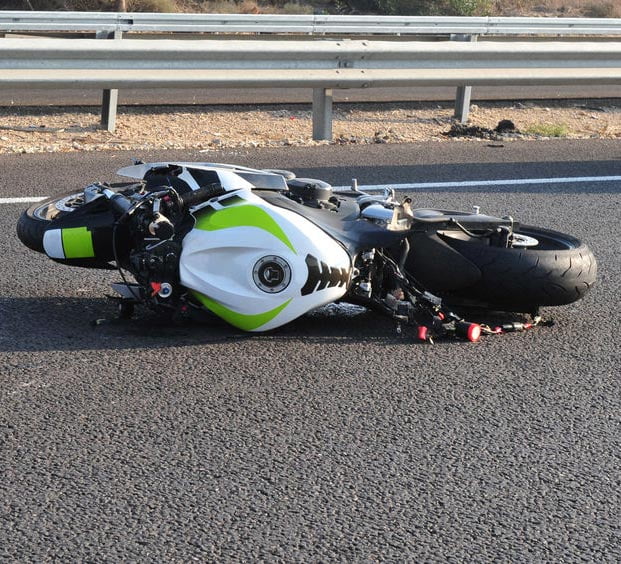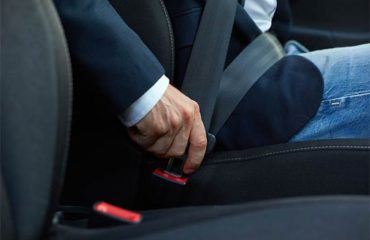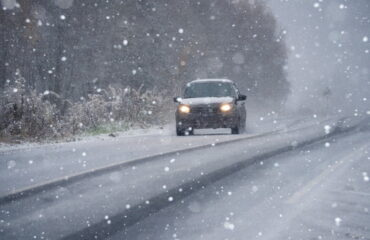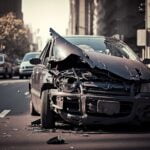13 Safe Driving Tips when Sharing the Road with Motorcycles
On average, a motorcycle weighs 450-600 lbs., while a sedan weighs more than 3,300 lbs. and an SUV tips the scales at more than 4,500 lbs. With this in mind, it’s no wonder injuries are often severe when a motorcyclist is in a collision with a vehicle that is 5 to 8 times its weight.
Rarely, if ever, are there minor accidents or fender benders when the crash involves a car and a motorcycle. Unfortunately, nearly 75% of motorcycle accidents involve a larger vehicle, which means that the injuries sustained by the rider are more likely to be serious and life threatening.

Motorcycle accidents: Whose fault is it?
While motorcyclists are found to be at fault in more than 50% of collisions, often times a crash is simply assumed to be the fault of the smaller vehicle, and the position of the motorcycle in the blind spot of the larger vehicle. However, there is also a scarier side of these collisions – road rage! Being stuck in traffic is no doubt frustrating. When a smaller and simpler mode of transportation gets through the bottleneck with relative ease and leaves motorists with the blaring noise of its pipes, aggression often rears its ugly head.
While it’s not common that motorists deliberately endanger the lives of motorcyclists, road rage does play a role, however small it may be. Perhaps this explains why the risk of being involved in a serious accident every time a motorcyclist is on the road stands at a massive 6% as opposed to the 1% risk faced by motorists.
The risks of being out and about on a motorcycle are high!
While the number of motorcycle deaths across the country decreased by nearly 6%, there was an increase in the number of motorcycle fatalities in Kansas. In 2017, across the country, nearly 5,000 motorcyclists lost their lives, while in Kansas nearly 50 deaths were reported in motorcycle crashes.
Although there wasn’t significant movement in those figures, what should move all of us is the fact that motorcycle fatalities remain almost 30 times more frequent than fatal crashes involving other types of vehicles. In addition to on-road problems, the vulnerability can also be blamed on the inherent dangers of a motorcycle.
- Motorcyclists don’t have an outer metal shell to protect them in case of a crash like motorists do.
- A motorcycle has just two wheels. Although this enables the rider to go through restricted spaces, it also makes the machine less stable and more prone to tipping and sideways movement.
- Bikers are more vulnerable to environmental hazards.
- Because the vehicle is considerably smaller, it is often in the blind spot of other automobiles.
- Motorcyclists have to pay more attention to maneuverability, which leads to greater mental and physical exhaustion.
- Other motorists often know little about how bikes work, which often makes a perfectly legal maneuver on the part of the biker seem sudden and rash to an inexperienced motorist.
- Sudden braking of a motorcycle often causes loss of control and skidding.
With inherent drawbacks such as these, is it any wonder that 98% of all accidents involving a motorcycle result in the rider sustaining some form of injury?
What can you do to safely share the roadways with motorcyclists?
1. Roads are to share, but lanes are for one: A deadly misconception is that motorcycles, being as small as they are, don’t need the lane to themselves. In reality, while the road is for sharing, the lane is not. If anything, motorcycles, with their greater vulnerability to road surface and environmental factors, need more space than other vehicles.
2. Make sure the motorcycle isn’t in your blind spot: It is easy to miss motorcycles when you see them through your rear view or side view mirror because the smaller vehicles often tend to blend in with the image. Keep an eye out for motorcyclists in your blind spot, particularly when changing lanes. In fact, devote several seconds to scanning all your blind spots.
3. The motorcycle may be closer than it appears: The narrow and low profile and the small size of the vehicle makes it harder for motorists to gauge both the actual distance and the speed of the motorcycle. Follow the safety warning on your side view mirror, which states that objects are closer than they appear, to remind yourself that the motorcycle may be several feet closer to your vehicle than what you initially estimated.
4. Signals can be deceptive: Turn signals and flashing lights on motorcycles add to the woes of the motorists because in older motorcycles, they don’t cancel out nor do they click off on their own after a turn is made. Actually, more often than not, the motorcyclist has to wait to come out of the turn and stabilize the vehicle before manually turning them off. Instead of relying on the light signals, slow down, wait and watch for the rider’s move.
5. Courtesy for all: The loud noise, the low or fast speed, and a blinker that is kept on for miles can often prove frustrating for other motorists. But remember, mistakes happen, and intense frustration and road rage is not going to help. Take a deep breath and give courtesy to other drivers.
6. Err on the side of distance: A pothole or a puddle on the road makes little difference to a car, but the bounce and the skid can wipe out a motorcyclist. Riders have to act quickly and drastically to avoid these dangers. The abrupt moves can be too much to handle if you don’t have enough distance between your car and the motorcycle. Don’t follow a motorcycle too closely! While rear-ending a vehicle may result in a few dents, the minor accident can be deadly for a motorcyclist.
7. Expect sudden moves: Motorcycles tend to react in a manner that may be perceived as sudden and even reckless. But remember that you can only control your actions and not those of the other motorists. Play it safe and slow down.
Also, keep a greater distance between the smaller vehicle and your car than what you would when following other automobiles. This will give you more room for reaction and defensive driving if the motorcyclist changes lanes abruptly or swerves violently in front of you.
8. Make concessions for the hazards on the road: When facing inclement weather and road surface issues, you can cruise through them all in a vehicle that offers more stability. But motorcyclists have to be aware of even the small stuff. Be polite and don’t add to their woes with offensive driving. Defensive is still the best way to prevent accidents and, in many cases, save lives.
9. Rules for passing: While you can pass a motorcycle as you would any vehicle, you need to think about how your move affects a motorcycle. When you cut in front of the smaller and lighter vehicle without keeping a distance of at least a few car lengths, the gust created is enough to make a motorcyclist lose control of the vehicle. Be conscientious of the fact that it is a motorcycle and not a car that you are passing.
10. Give them the heads up: Sudden braking can prove to be hazardous for even experienced bikers. In fact, only 40% of riders manage to choose the proper evasive braking action needed to stop a crash, and even fewer actually manage to execute it correctly.
Unfortunately, for motorcyclists quick action often leads to skidding. Don’t put these riders in a position where they need to take abrupt and evasive action. Let them know of your intention to turn or change lanes with the proper light signals.
11. Turn with care: Left turns pose the maximum risk when it comes to motorcycle and car crashes. In fact, more than 65% of such accidents occur when motorists trespass on the smaller vehicles right of way while turning. In most instances, such acts are not deliberate, but simply a matter of misjudging the speed, distance and movement of the motorcycle.
Remember, motorcycles are not operated like cars. Check and double check to make sure that you don’t have a motorcycle in your blind spot who may be inadvertently and dangerously cut off. It is particularly important to look for oncoming motorcyclists, as almost 56% of all motorcycle accidents are head-on collisions. These lead to fatalities and grievous injuries.
12. Intersections are the most dangerous: Let’s face it – intersections are dangerous for just about everybody on the road. But for all the reasons stated above, they can pose the gravest threat for motorcyclists. Keeping this in mind, obey all traffic signs and rules when at an intersections. Come to a complete halt at the intersection and check for oncoming traffic from both sides before proceeding.
13. Keep things safe at night: Things can be particularly hazardous for motorcyclists at night, for obvious reasons. Help them out by making sure that your high beams don’t blind them, and increase your following distance.
The statistics from the auto insurance industry show that an average driver is involved in 3-4 accidents throughout his/her lifetime. Be a conscientious driver and share the road with motorcyclists. Road safety is truly everybody’s responsibility! If a collision does occur, call the experienced attorneys at DeVaughn James for a free consultation and explanation of the rights and benefits that you’re entitled to.









